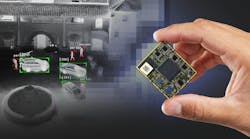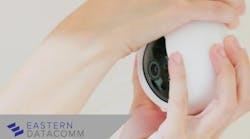Keep an eye on the next generation of video security systems. Advances in the lab are about to revolutionize how governments and businesses use video networks to protect sensitive facilities and monitor who is doing what, where and when.
Several electronics and engineering companies, from large players such as Sony to small entrants such as ObjectVideo, have engineering teams working full time on camera and sensor technology unlike anything available today in the U.S. video security field--a $1.6-billion market.
Industry revenues will increase an average of 10% each year for the next several years as new camera and computerized sensor technology become standard fare to meet rising demand in the public and private sectors, whether at the ballpark, a rail platform or a bank.
A unifying goal of the technology is to move beyond today's common practice of relying on remote cameras, a bank of live-display monitors and a security guard who may or may not be watching them. New networks will rely far less on the guard and far more on imbedded sensors to notice anything out of the ordinary.
"The more our eyes can see, the more we can respond," says Ken Tarpey, CFO of ObjectVideo. "The next generation of video cameras will let the computer do the looking, hour after hour, and let the guard know when there's trouble."
Among the products being developed is a thermal and motion-detection camera that can distinguish a human being from a cat or a swinging branch and notify the guard on duty with a flashing message on a computer screen.
Another camera system can be "trained" to compare differences in a selected area, allowing it to notice a travel bag or package that has been unattended for a while in a train station, for instance, or an unauthorized boat lingering near a U.S. Navy ship. Others use digital software to penetrate heavy snow, rain or fog to get a clear picture.
Among the most sophisticated projects in development is a multidimensional surveillance network that will allow a guard to click on a person appearing on a computer monitor and trace the individual's steps backward to see where he or she was a few minutes earlier.
Privacy red flags are certain to be raised by some as the new equipment is used more often. There will be calls in Congress and from privacy advocates to limit use of intrusive surveillance systems and to prevent their abuse by guards or other employees. But, by and large, public and corporate security concerns will trump privacy issues. If limits ultimately are placed on how some systems are used, they won't be so restrictive as to slow or flatten demand for better security camera networks.
Other companies involved in the research include Samsung, Sarnoff Corp., VistaScape Security Systems, Axis Communications, Mobotix and ADT Security Services. Prototype versions of the self-operating, thermal-imaging camera are already being tested by the Homeland Security Department on the U.S.-Mexico and U.S.-Canada borders.

